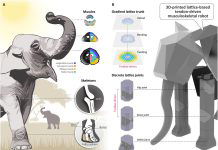
A study from the Institute of Atmospheric Physics of the Chinese Academy of Sciences has unveiled an artificial intelligence (AI) model, which uses deep learning algorithms and has outperformed traditional dynamic models in predicting the development and pattern of El Niño events in the central Pacific Ocean.
Published in Advances in Atmospheric Sciences, the study underlines the potential of AI to enhance seasonal forecasting and offers significant progress in climate prediction.
Better Predictions for Better Preparedness
El Niño events in the central Pacific Ocean can dramatically impact global climate, making precise predictions crucial for risk reduction and preparedness.
The new AI model, based on convolutional neural network technology, is trained on sea surface temperature (SST) data generated by models participating in the Coupled Model Intercomparison Projects.
It aims to predict the specific shape, location, and timing of SST anomalies linked to central Pacific El Niño events.
Outperforming Traditional Models
The AI model’s predictions exceed the accuracy of traditional dynamical models, particularly when forecasting SST anomalies in the west-central equatorial Pacific.
Moreover, a hybrid model that combines forecasts from both the AI model and traditional models achieves even greater accuracy for central and eastern Pacific El Niño events.
Implications for Disaster Risk Reduction
These findings could have considerable implications for global disaster risk reduction efforts. AI-driven predictions can aid in refining preparedness and mitigation strategies.
By leveraging the potential of AI, scientists and policymakers can collaborate to bolster global resilience to climate-related challenges.
The research team aims to further utilize the power of deep learning to broaden the use of AI models in seasonal climate forecasting, striving to provide more accurate and earlier warnings of major weather events.
The study was published in Advances in Atmospheric Sciences.
Follow us on Twitter for more articles about this topic.
Source: Chinese Academy of Sciences



